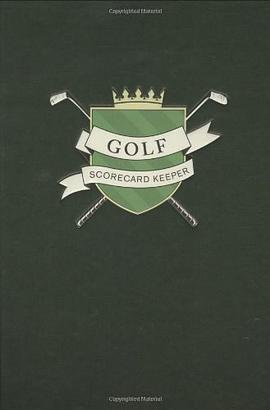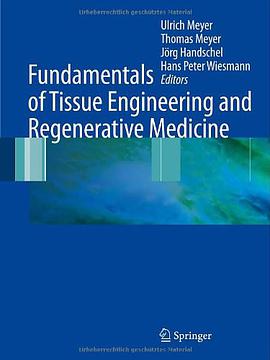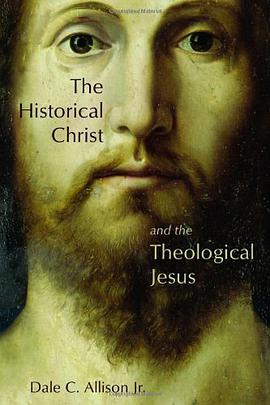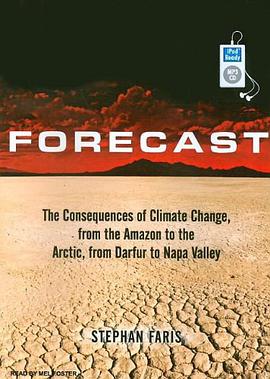Foreword, by Chris Isham page xvii
Preface xix
Notation and conventions xxiii
Introduction: Defining quantum gravity 1
Why quantum gravity in the twenty-first century? 1
The role of background independence 8
Approaches to quantum gravity 11
Motivation for canonical quantum general relativity 23
Outline of the book 25
I CLASSICAL FOUNDATIONS, INTERPRETATION AND THE
CANONICAL QUANTISATION PROGRAMME
1 Classical Hamiltonian formulation of General Relativity 39
1.1 The ADM action 39
1.2 Legendre transform and Dirac analysis of constraints 46
1.3 Geometrical interpretation of the gauge transformations 50
1.4 Relation between the four-dimensional diffeomorphism group and
the transformations generated by the constraints 56
1.5 Boundary conditions, gauge transformations and symmetries 60
1.5.1 Boundary conditions 60
1.5.2 Symmetries and gauge transformations 65
2 The problem of time, locality and the interpretation of
quantum mechanics 74
2.1 The classical problem of time: Dirac observables 75
2.2 Partial and complete observables for general constrained systems 81
2.2.1 Partial and weak complete observables 82
2.2.2 Poisson algebra of Dirac observables 85
2.2.3 Evolving constants 89
2.2.4 Reduced phase space quantisation of the algebra of Dirac
observables and unitary implementation of the
multi-fingered time evolution 90
2.3 Recovery of locality in General Relativity 93
2.4 Quantum problem of time: physical inner product and
interpretation of quantum mechanics 95
2.4.1 Physical inner product 95
2.4.2 Interpretation of quantum mechanics 98
3 The programme of canonical quantisation 107
3.1 The programme 108
4 The new canonical variables of Ashtekar for
General Relativity 118
4.1 Historical overview 118
4.2 Derivation of Ashtekar’s variables 123
4.2.1 Extension of the ADM phase space 123
4.2.2 Canonical transformation on the extended phase space 126
II FOUNDATIONS OF MODERN CANONICAL QUANTUM
GENERAL RELATIVITY
5 Introduction 141
5.1 Outline and historical overview 141
6 Step I: the holonomy–flux algebra P 157
6.1 Motivation for the choice of P 157
6.2 Definition of P: (1) Paths, connections, holonomies and
cylindrical functions 162
6.2.1 Semianalytic paths and holonomies 162
6.2.2 A natural topology on the space of generalised connections 168
6.2.3 Gauge invariance: distributional gauge transformations 175
6.2.4 The C∗ algebraic viewpoint and cylindrical functions 183
6.3 Definition of P: (2) surfaces, electric fields, fluxes and vector fields 191
6.4 Definition of P: (3) regularisation of the holonomy–flux
Poisson algebra 194
6.5 Definition of P: (4) Lie algebra of cylindrical functions and
flux vector fields 202
7 Step II: quantum ∗-algebra A 206
7.1 Definition of A 206
7.2 (Generalised) bundle automorphisms of A 209
8 Step III: representation theory of A 212
8.1 General considerations 212
8.2 Uniqueness proof: (1) existence 219
8.2.1 Regular Borel measures on the projective limit:
the uniform measure 220
8.2.2 Functional calculus on a projective limit 226
8.2.3 + Density and support properties of A,A/G with respect
to A,A/G 233
8.2.4 Spin-network functions and loop representation 237
8.2.5 Gauge and diffeomorphism invariance of μ0 242
8.2.6 + Ergodicity of μ0 with respect to spatial diffeomorphisms 245
8.2.7 Essential self-adjointness of electric flux momentum
operators 246
8.3 Uniqueness proof: (2) uniqueness 247
8.4 Uniqueness proof: (3) irreducibility 252
9 Step IV: (1) implementation and solution of the
kinematical constraints 264
9.1 Implementation of the Gauß constraint 264
9.1.1 Derivation of the Gauß constraint operator 264
9.1.2 Complete solution of the Gauß constraint 266
9.2 Implementation of the spatial diffeomorphism constraint 269
9.2.1 Derivation of the spatial diffeomorphism constraint
operator 269
9.2.2 General solution of the spatial diffeomorphism constraint 271
10 Step IV: (2) implementation and solution of the
Hamiltonian constraint 279
10.1 Outline of the construction 279
10.2 Heuristic explanation for UV finiteness due to background
independence 282
10.3 Derivation of the Hamiltonian constraint operator 286
10.4 Mathematical definition of the Hamiltonian constraint operator 291
10.4.1 Concrete implementation 291
10.4.2 Operator limits 296
10.4.3 Commutator algebra 300
10.4.4 The quantum Dirac algebra 309
10.5 The kernel of the Wheeler–DeWitt constraint operator 311
10.6 The Master Constraint Programme 317
10.6.1 Motivation for the Master Constraint Programme in
General Relativity 317
10.6.2 Definition of the Master Constraint 320
10.6.3 Physical inner product and Dirac observables 326
10.6.4 Extended Master Constraint 329
10.6.5 Algebraic Quantum Gravity (AQG) 331
10.7 + Further related results 334
10.7.1 The Wick transform 334
10.7.2 Testing the new regularisation technique by models of
quantum gravity 340
10.7.3 Quantum Poincar´e algebra 341
10.7.4 Vasiliev invariants and discrete quantum gravity 344
11 Step V: semiclassical analysis 345
11.1 + Weaves 349
11.2 Coherent states 353
11.2.1 Semiclassical states and coherent states 354
11.2.2 Construction principle: the complexifier method 356
11.2.3 Complexifier coherent states for diffeomorphism-invariant
theories of connections 362
11.2.4 Concrete example of complexifier 367
11.2.5 Semiclassical limit of loop quantum gravity: graph-changing
operators, shadows and diffeomorphism-invariant
coherent states 376
11.2.6 + The infinite tensor product extension 385
11.3 Graviton and photon Fock states from L2(A, dμ0) 390
III PHYSICAL APPLICATIONS
12 Extension to standard matter 399
12.1 The classical standard model coupled to gravity 400
12.1.1 Fermionic and Einstein contribution 401
12.1.2 Yang–Mills and Higgs contribution 405
12.2 Kinematical Hilbert spaces for diffeomorphism-invariant theories
of fermion and Higgs fields 406
12.2.1 Fermionic sector 406
12.2.2 Higgs sector 411
12.2.3 Gauge and diffeomorphism-invariant subspace 417
12.3 Quantisation of matter Hamiltonian constraints 418
12.3.1 Quantisation of Einstein–Yang–Mills theory 419
12.3.2 Fermionic sector 422
12.3.3 Higgs sector 425
12.3.4 A general quantisation scheme 429
13 Kinematical geometrical operators 431
13.1 Derivation of the area operator 432
13.2 Properties of the area operator 434
13.3 Derivation of the volume operator 438
13.4 Properties of the volume operator 447
13.4.1 Cylindrical consistency 447
13.4.2 Symmetry, positivity and self-adjointness 448
13.4.3 Discreteness and anomaly-freeness 448
13.4.4 Matrix elements 449
13.5 Uniqueness of the volume operator, consistency with the flux
operator and pseudo-two-forms 453
13.6 Spatially diffeomorphism-invariant volume operator 455
14 Spin foam models 458
14.1 Heuristic motivation from the canonical framework 458
14.2 Spin foam models from BF theory 462
14.3 The Barrett–Crane model 466
14.3.1 Plebanski action and simplicity constraints 466
14.3.2 Discretisation theory 472
14.3.3 Discretisation and quantisation of BF theory 476
14.3.4 Imposing the simplicity constraints 482
14.3.5 Summary of the status of the Barrett–Crane model 494
14.4 Triangulation dependence and group field theory 495
14.5 Discussion 502
15 Quantum black hole physics 511
15.1 Classical preparations 514
15.1.1 Null geodesic congruences 514
15.1.2 Event horizons, trapped surfaces and apparent horizons 517
15.1.3 Trapping, dynamical, non-expanding and (weakly) isolated
horizons 519
15.1.4 Spherically symmetric isolated horizons 526
15.1.5 Boundary symplectic structure for SSIHs 535
15.2 Quantisation of the surface degrees of freedom 540
15.2.1 Quantum U(1) Chern–Simons theory with punctures 541
15.3 Implementing the quantum boundary condition 546
15.4 Implementation of the quantum constraints 548
15.4.1 Remaining U(1) gauge transformations 549
15.4.2 Remaining surface diffeomorphism transformations 550
15.4.3 Final physical Hilbert space 550
15.5 Entropy counting 550
15.6 Discussion 557
16 Applications to particle physics and quantum cosmology 562
16.1 Quantum gauge fixing 562
16.2 Loop Quantum Cosmology 563
17 Loop Quantum Gravity phenomenology 572
IV MATHEMATICAL TOOLS AND THEIR CONNECTION
TO PHYSICS
18 Tools from general topology 577
18.1 Generalities 577
18.2 Specific results 581
19 Differential, Riemannian, symplectic and complex
geometry 585
19.1 Differential geometry 585
19.1.1 Manifolds 585
19.1.2 Passive and active diffeomorphisms 587
19.1.3 Differential calculus 590
19.2 Riemannian geometry 606
19.3 Symplectic manifolds 614
19.3.1 Symplectic geometry 614
19.3.2 Symplectic reduction 616
19.3.3 Symplectic group actions 621
19.4 Complex, Hermitian and K¨ahler manifolds 623
20 Semianalytic category 627
20.1 Semianalytic structures on Rn 627
20.2 Semianalytic manifolds and submanifolds 631
21 Elements of fibre bundle theory 634
21.1 General fibre bundles and principal fibre bundles 634
21.2 Connections on principal fibre bundles 636
22 Holonomies on non-trivial fibre bundles 644
22.1 The groupoid of equivariant maps 644
22.2 Holonomies and transition functions 647
23 Geometric quantisation 652
23.1 Prequantisation 652
23.2 Polarisation 662
23.3 Quantisation 668
24 The Dirac algorithm for field theories with constraints 671
24.1 The Dirac algorithm 671
24.2 First- and second-class constraints and the Dirac bracket 674
25 Tools from measure theory 680
25.1 Generalities and the Riesz–Markov theorem 680
25.2 Measure theory and ergodicity 687
26 Key results from functional analysis 689
26.1 Metric spaces and normed spaces 689
26.2 Hilbert spaces 691
26.3 Banach spaces 693
26.4 Topological spaces 694
26.5 Locally convex spaces 694
26.6 Bounded operators 695
26.7 Unbounded operators 697
26.8 Quadratic forms 699
27 Elementary introduction to Gel’fand theory for
Abelian C∗-algebras 701
27.1 Banach algebras and their spectra 701
27.2 The Gel’fand transform and the Gel’fand isomorphism 709
28 Bohr compactification of the real line 713
28.1 Definition and properties 713
28.2 Analogy with loop quantum gravity 715
29 Operator ∗-algebras and spectral theorem 719
29.1 Operator ∗-algebras, representations and GNS construction 719
29.2 Spectral theorem, spectral measures, projection valued measures,
functional calculus 723
30 Refined algebraic quantisation (RAQ) and direct integral
decomposition (DID) 729
30.1 RAQ 729
30.2 Master Constraint Programme (MCP) and DID 735
31 Basics of harmonic analysis on compact Lie groups 746
31.1 Representations and Haar measures 746
31.2 The Peter and Weyl theorem 752
32 Spin-network functions for SU(2) 755
32.1 Basics of the representation theory of SU(2) 755
32.2 Spin-network functions and recoupling theory 757
32.3 Action of holonomy operators on spin-network functions 762
32.4 Examples of coherent state calculations 765
33 + Functional analytic description of classical connection
dynamics 770
33.1 Infinite-dimensional (symplectic) manifolds 770
References 775
Index 809
· · · · · · (
收起)






















